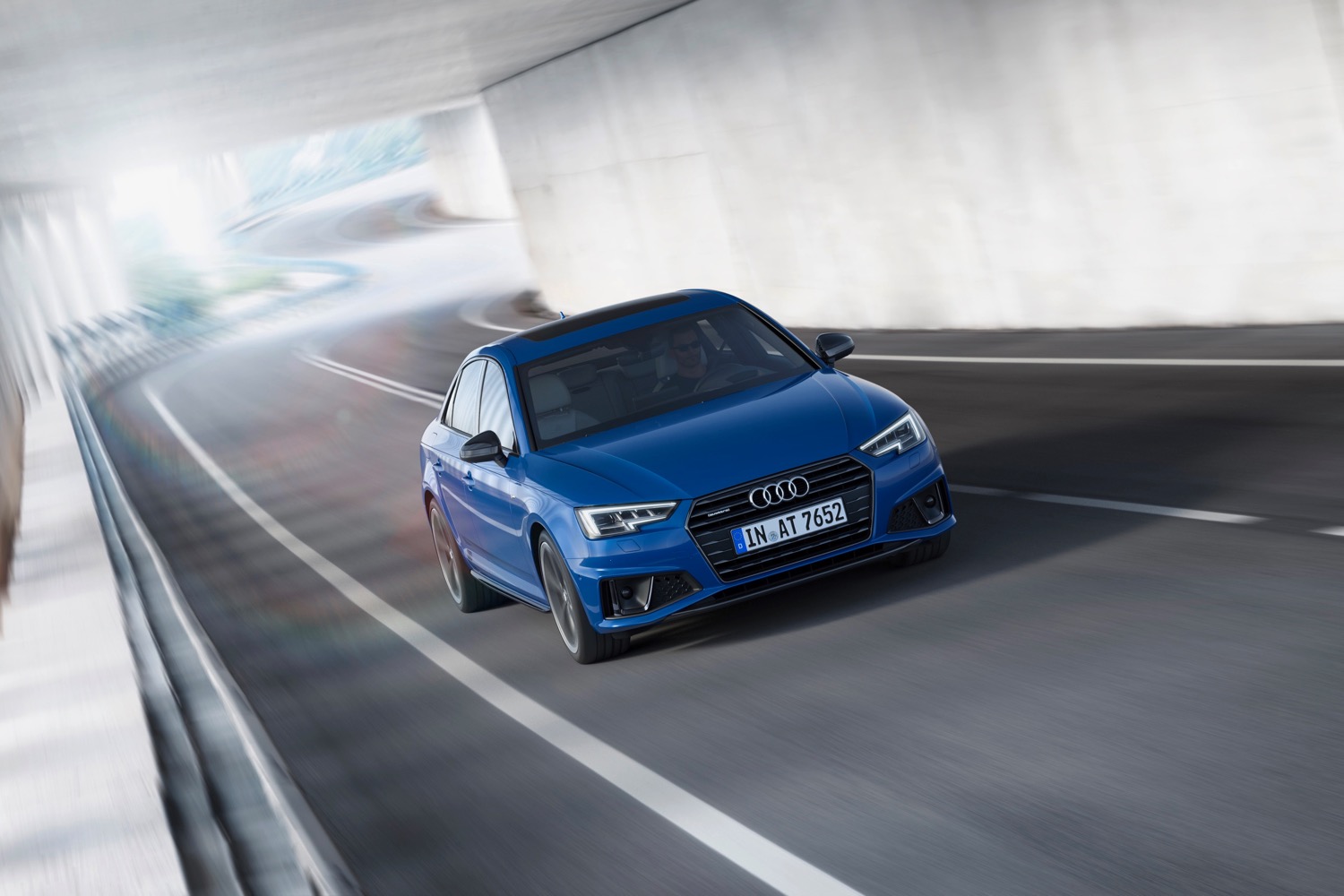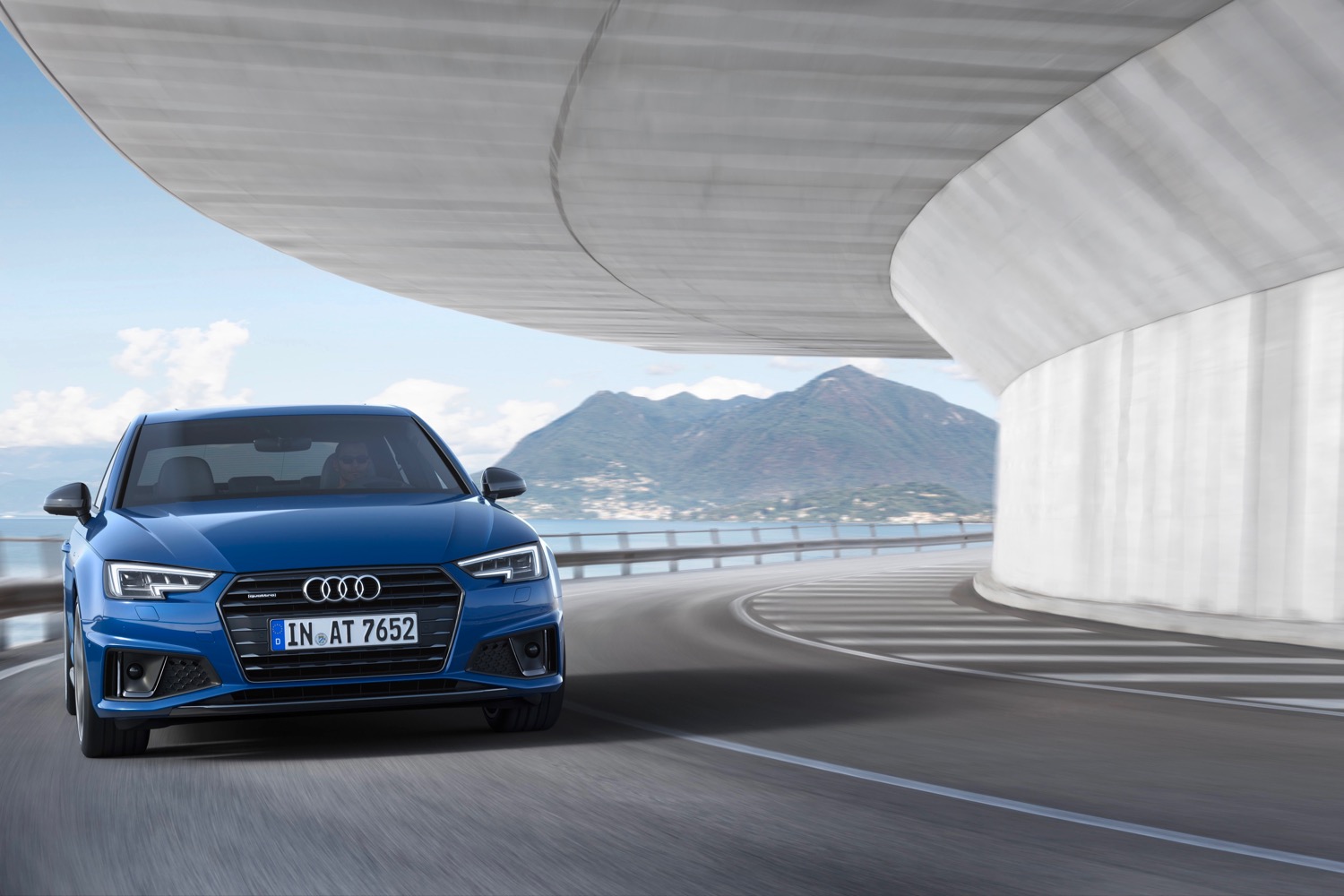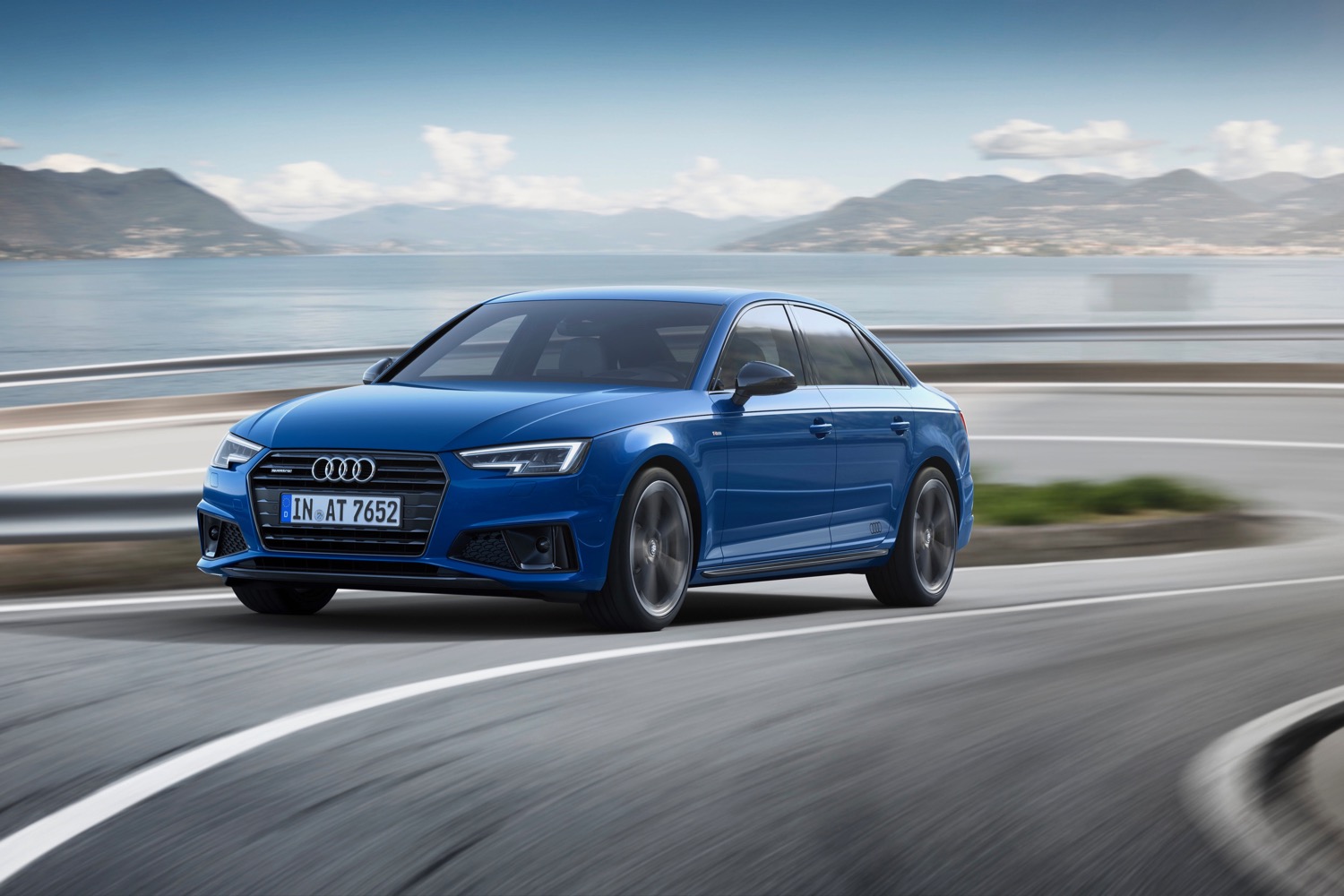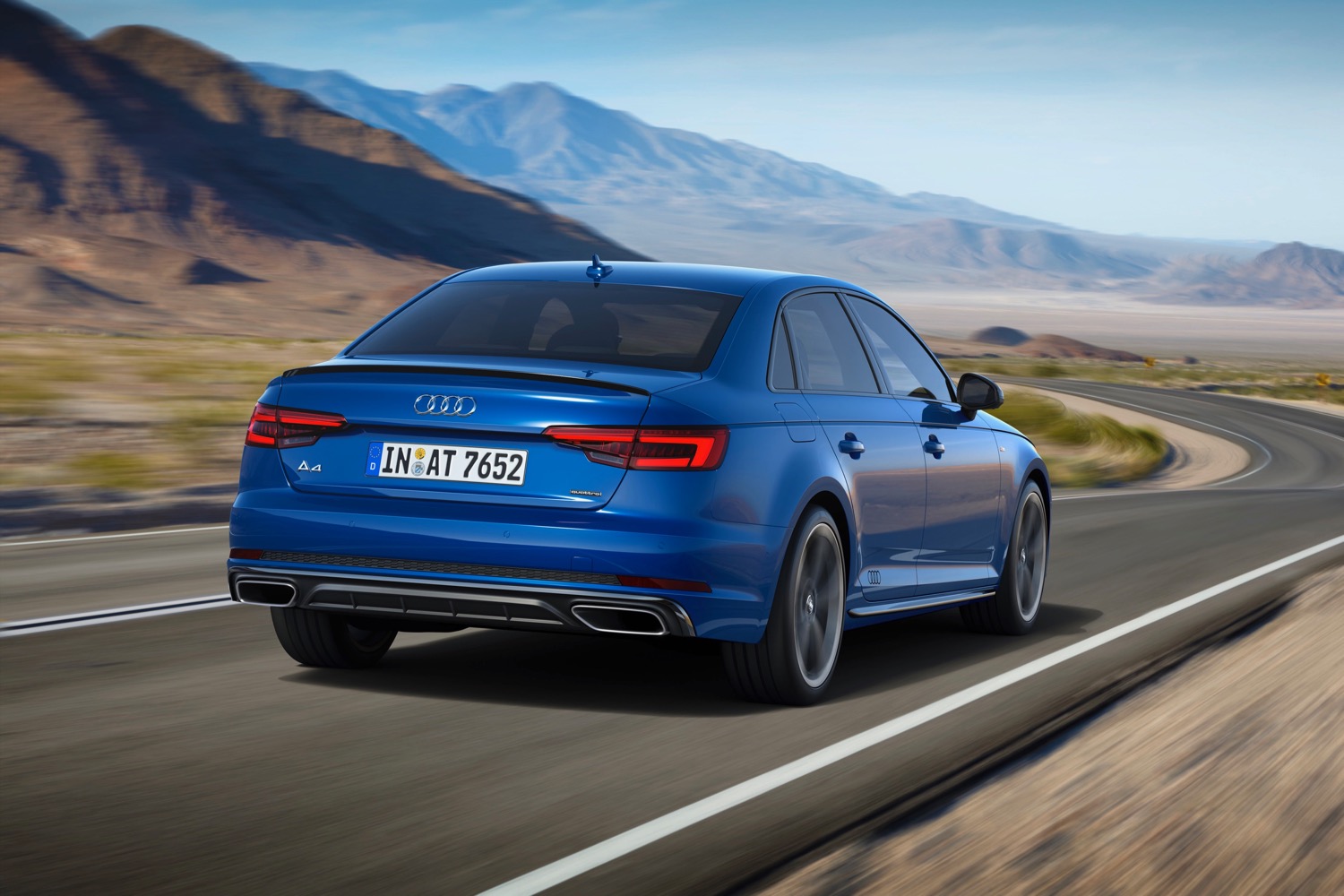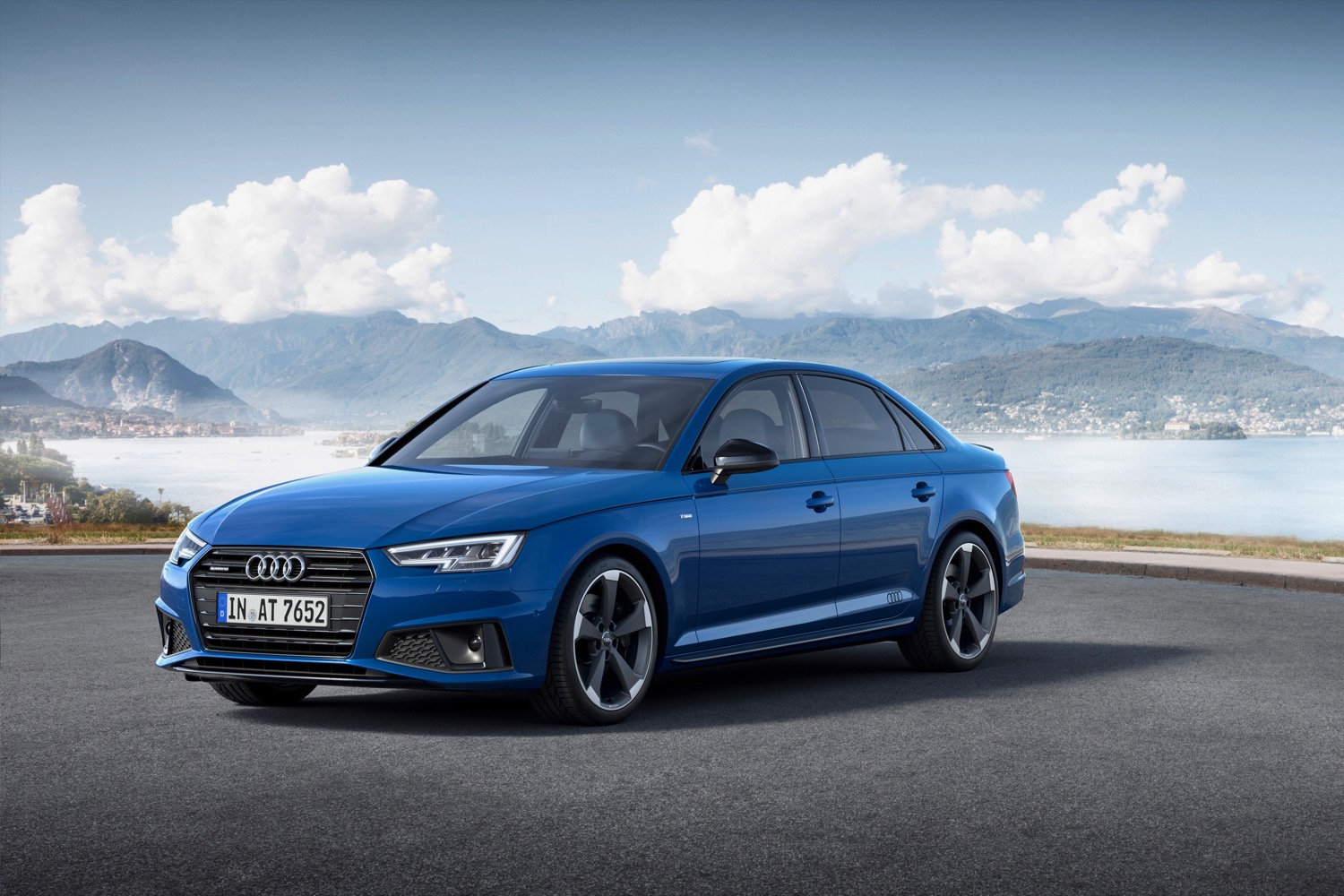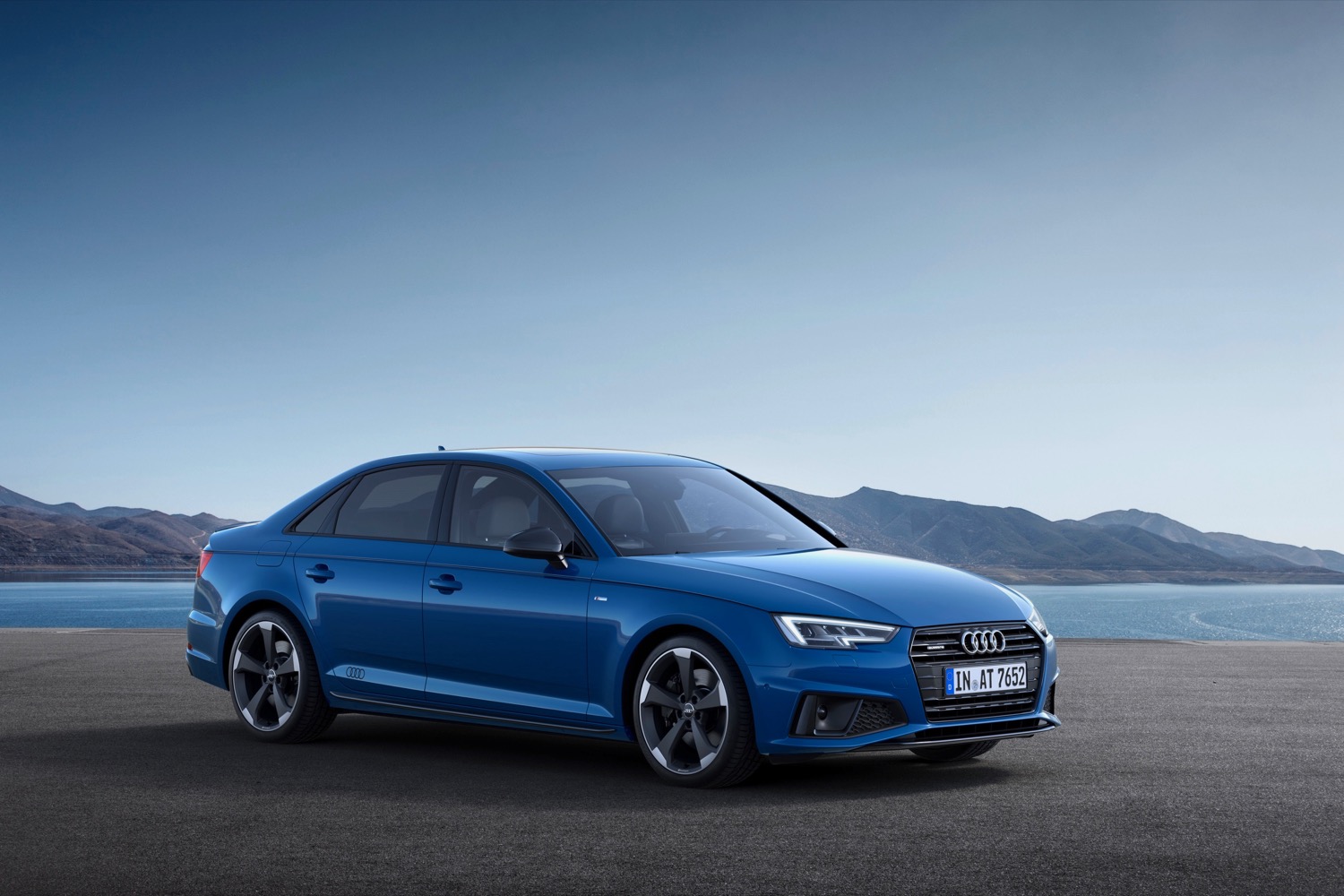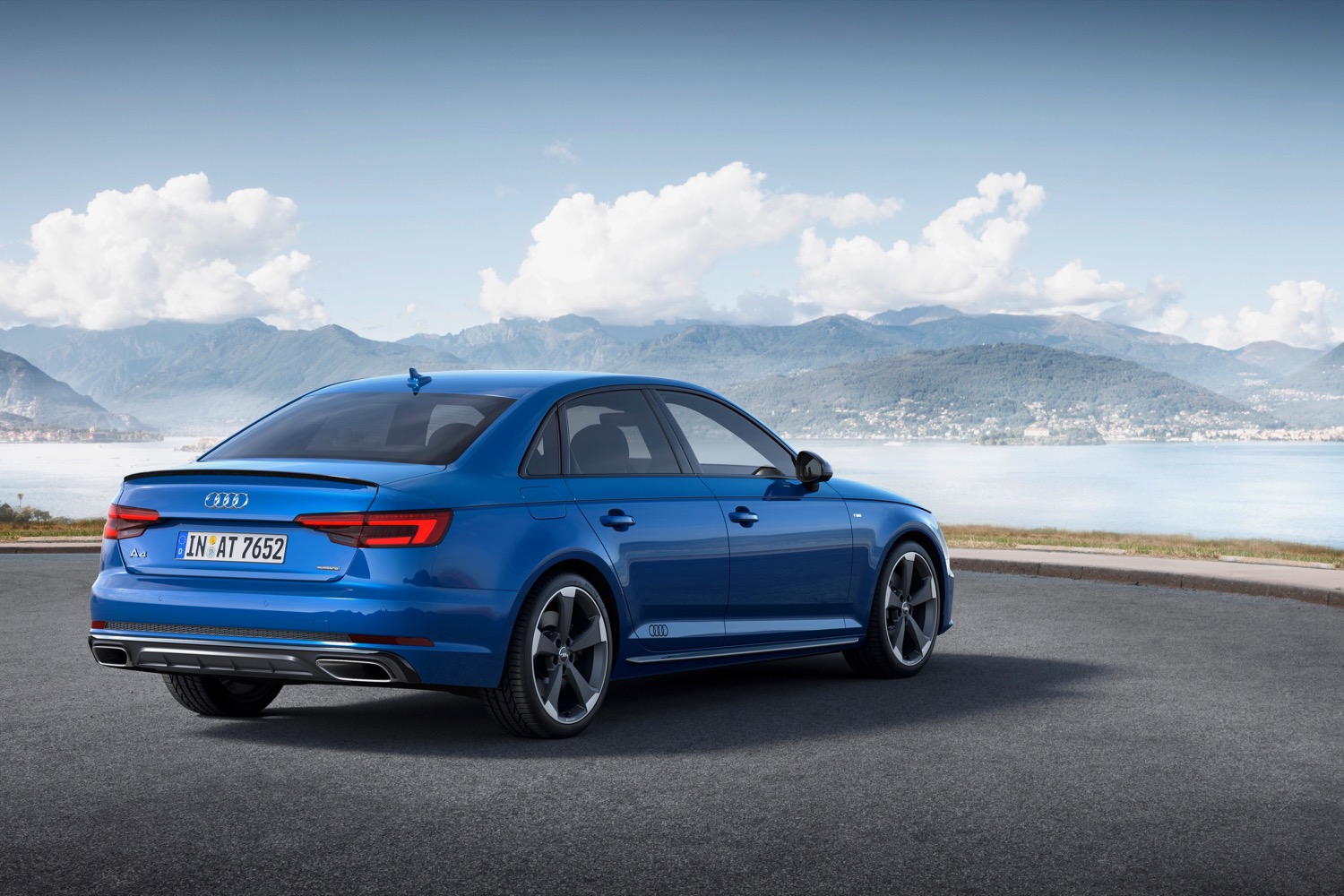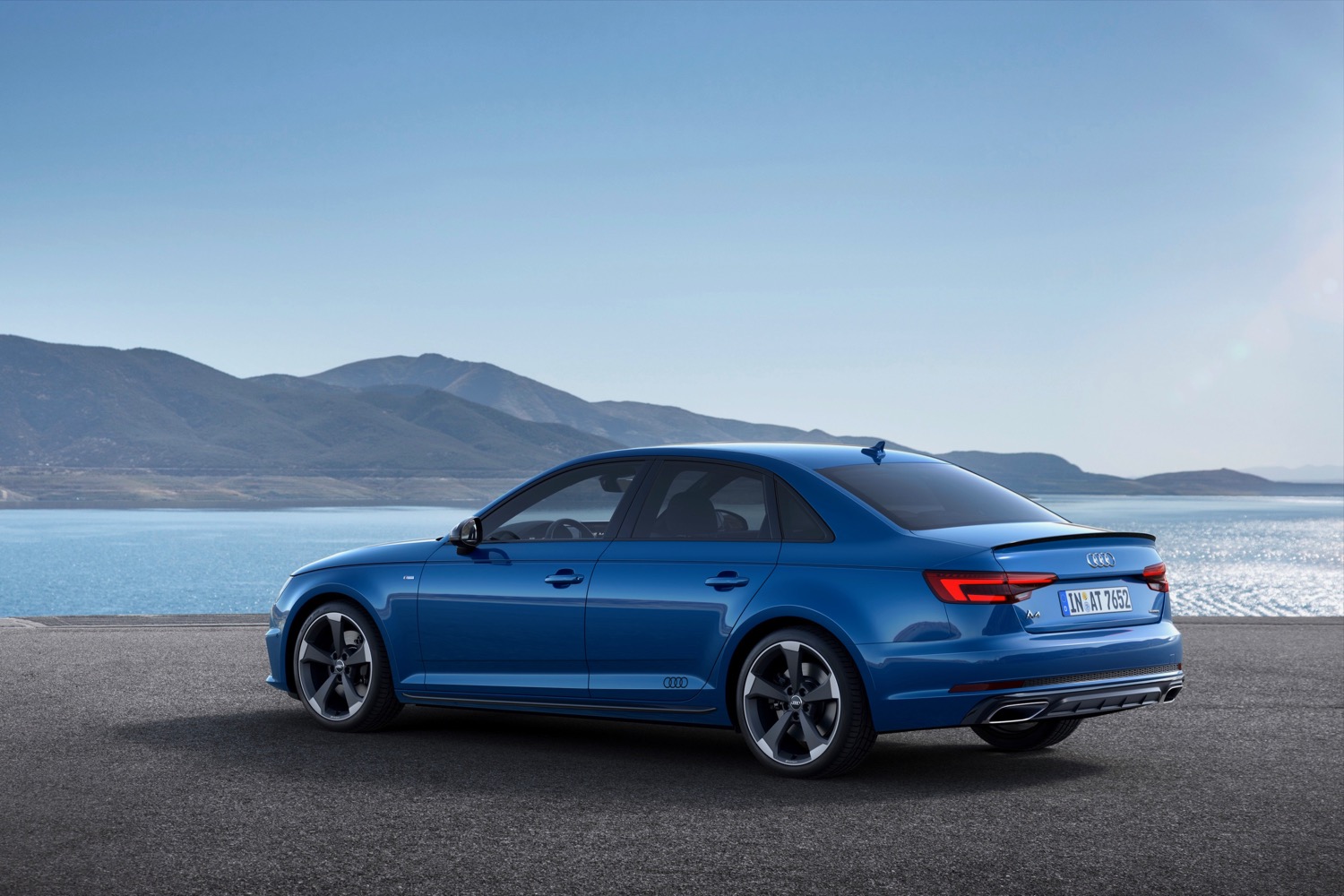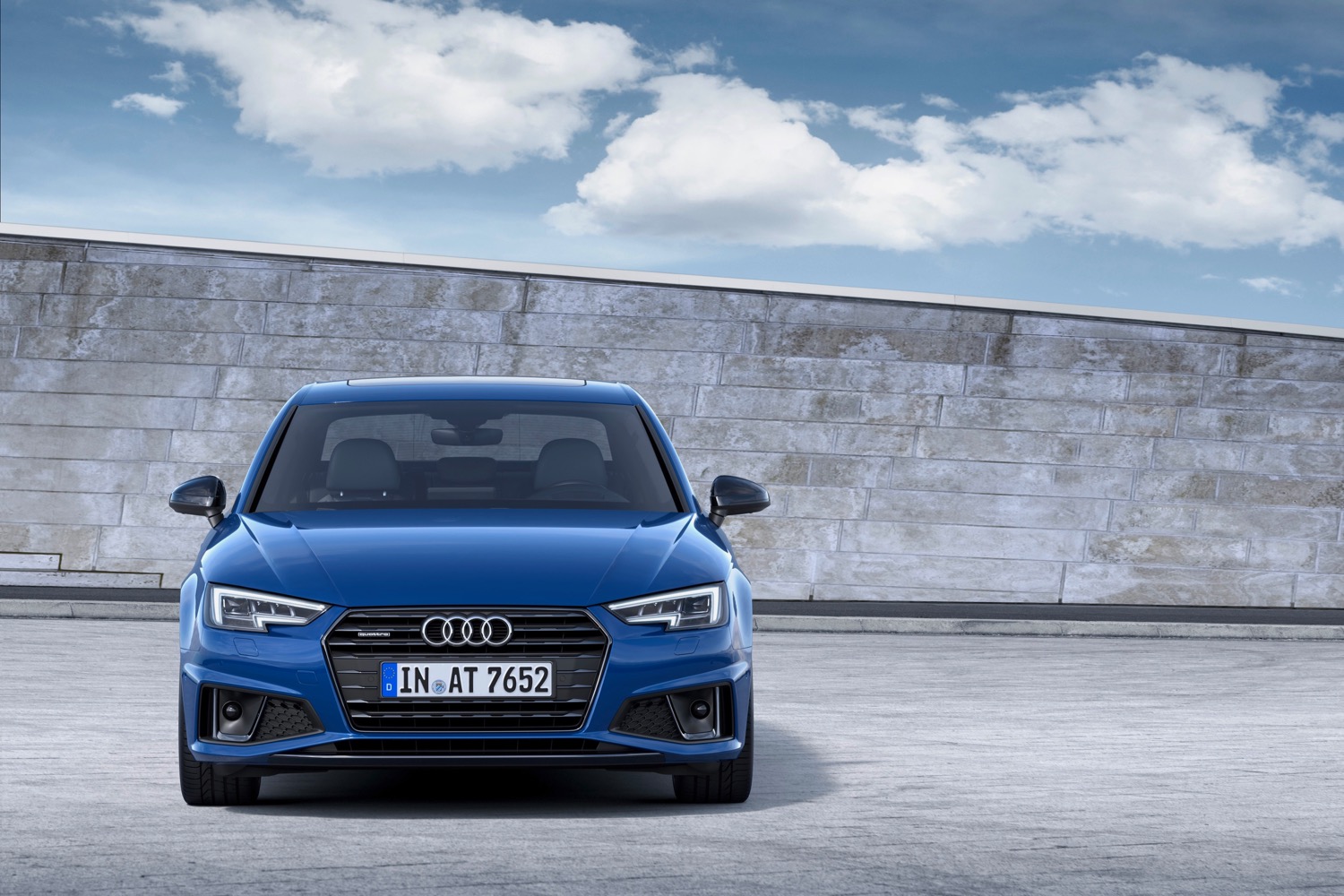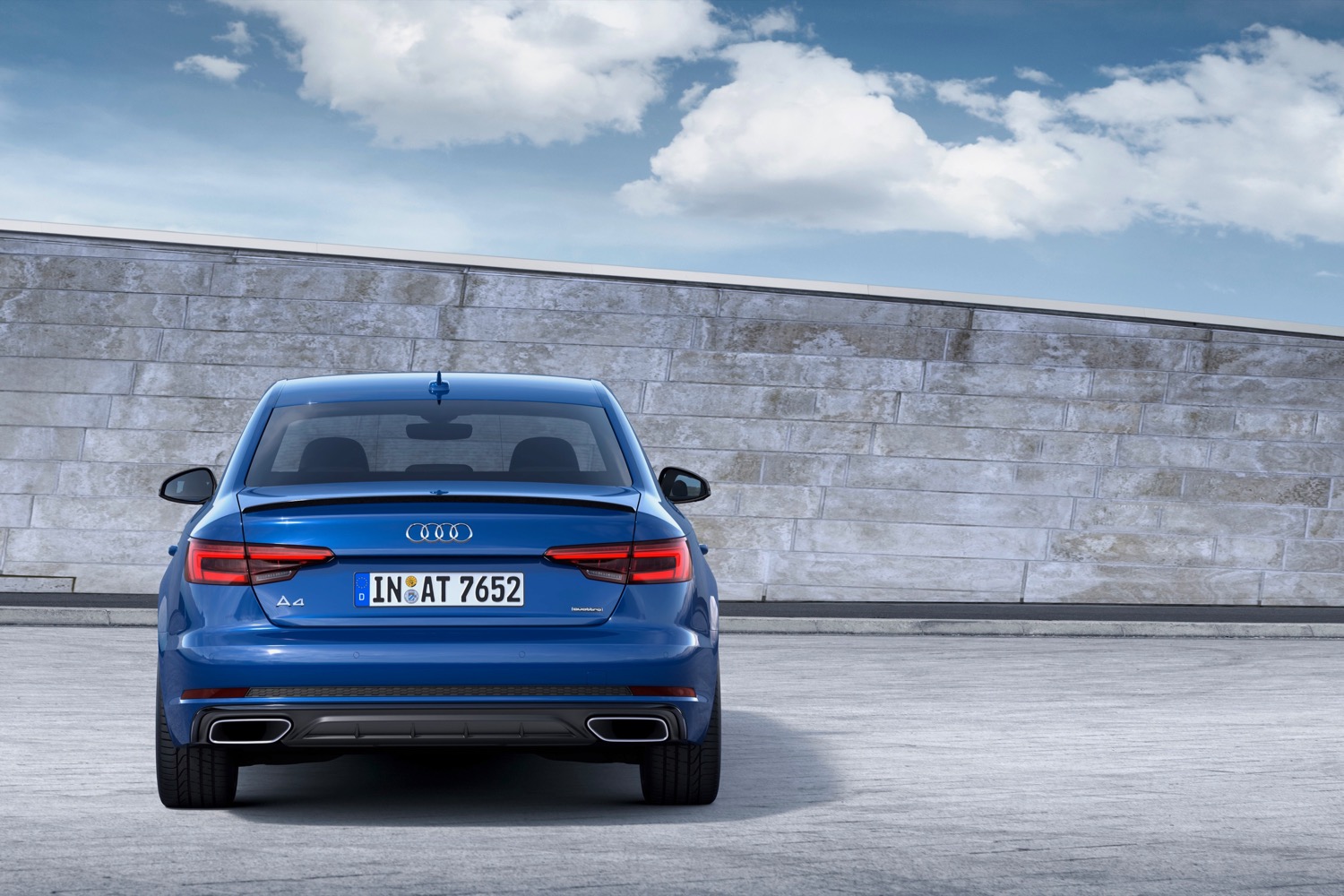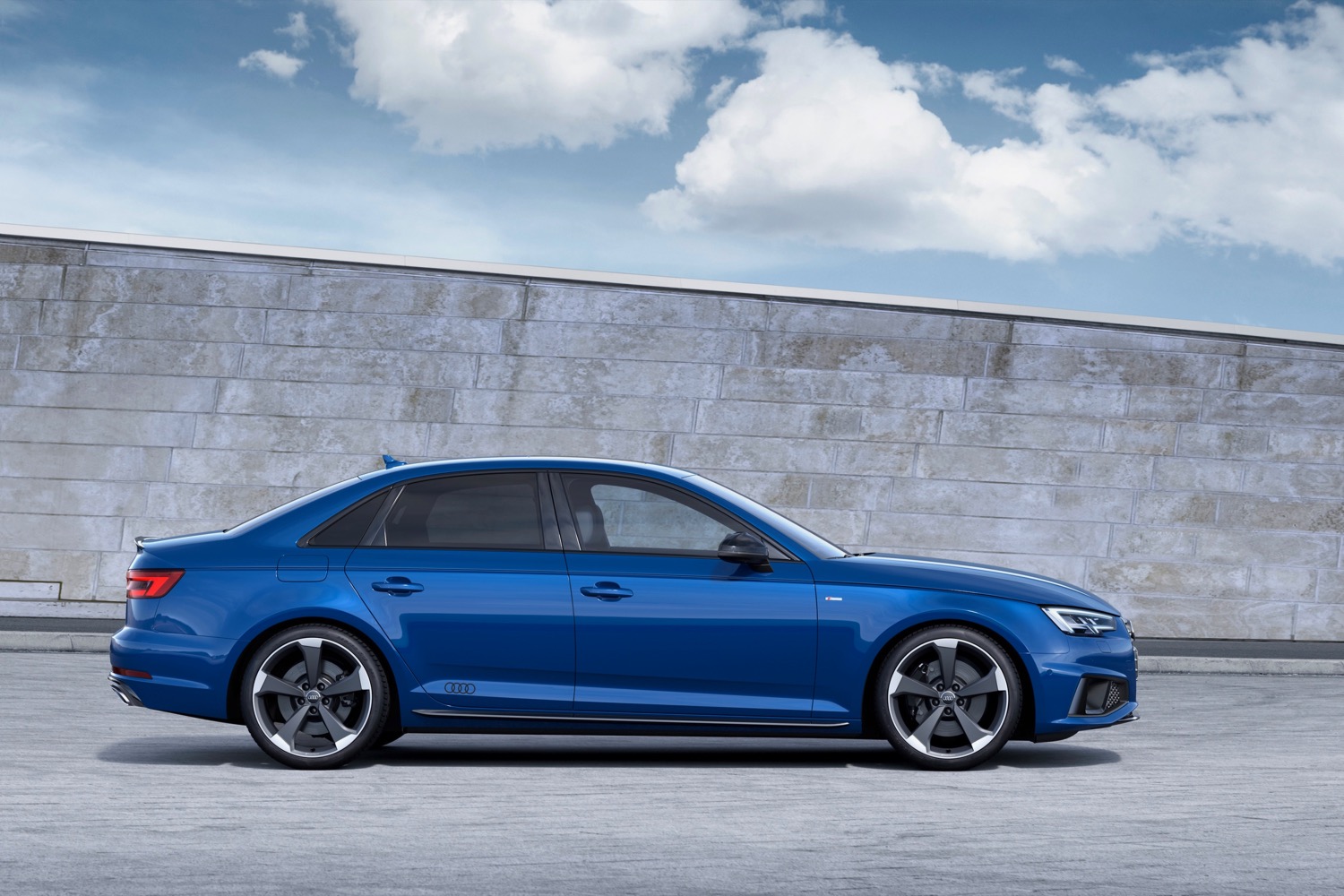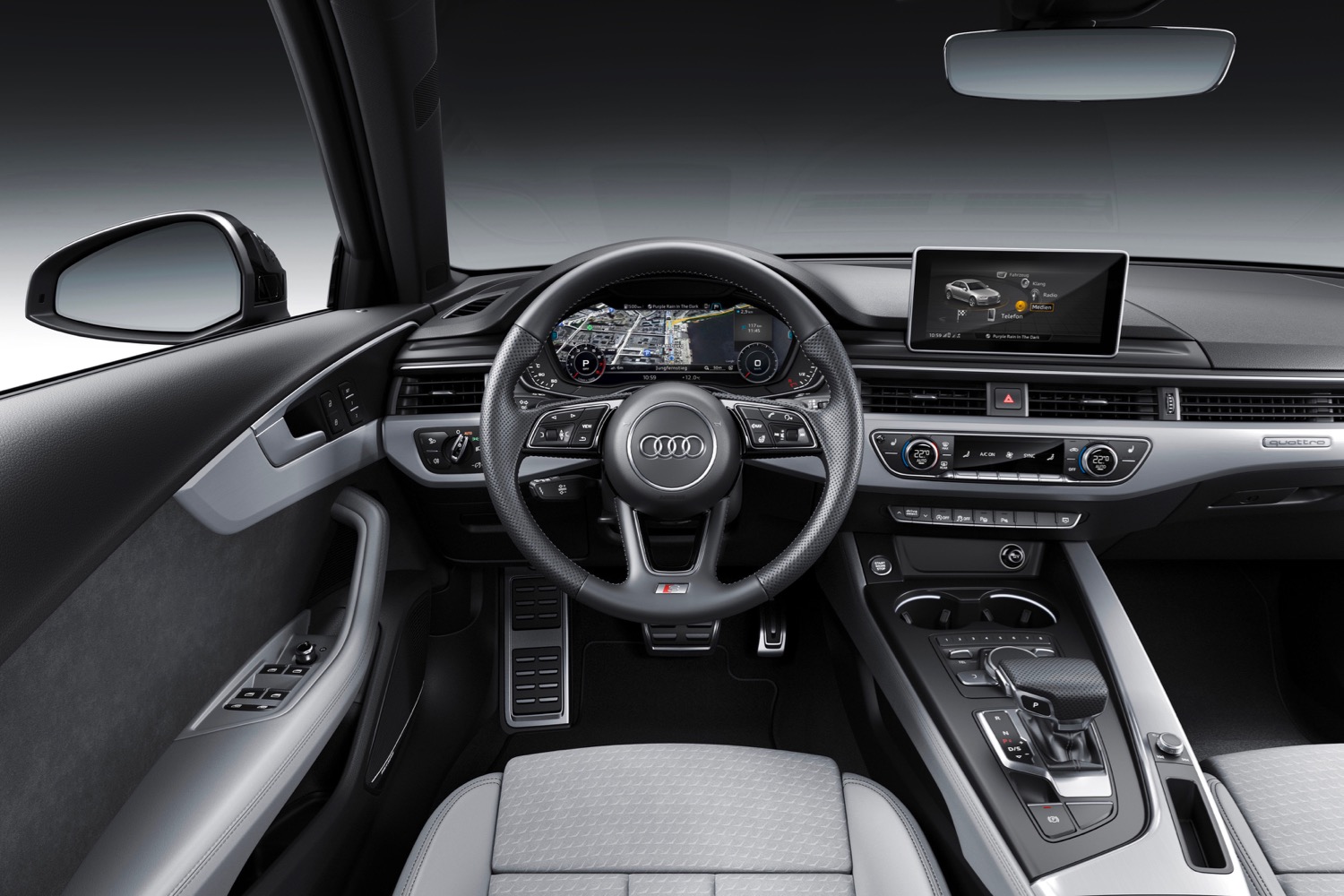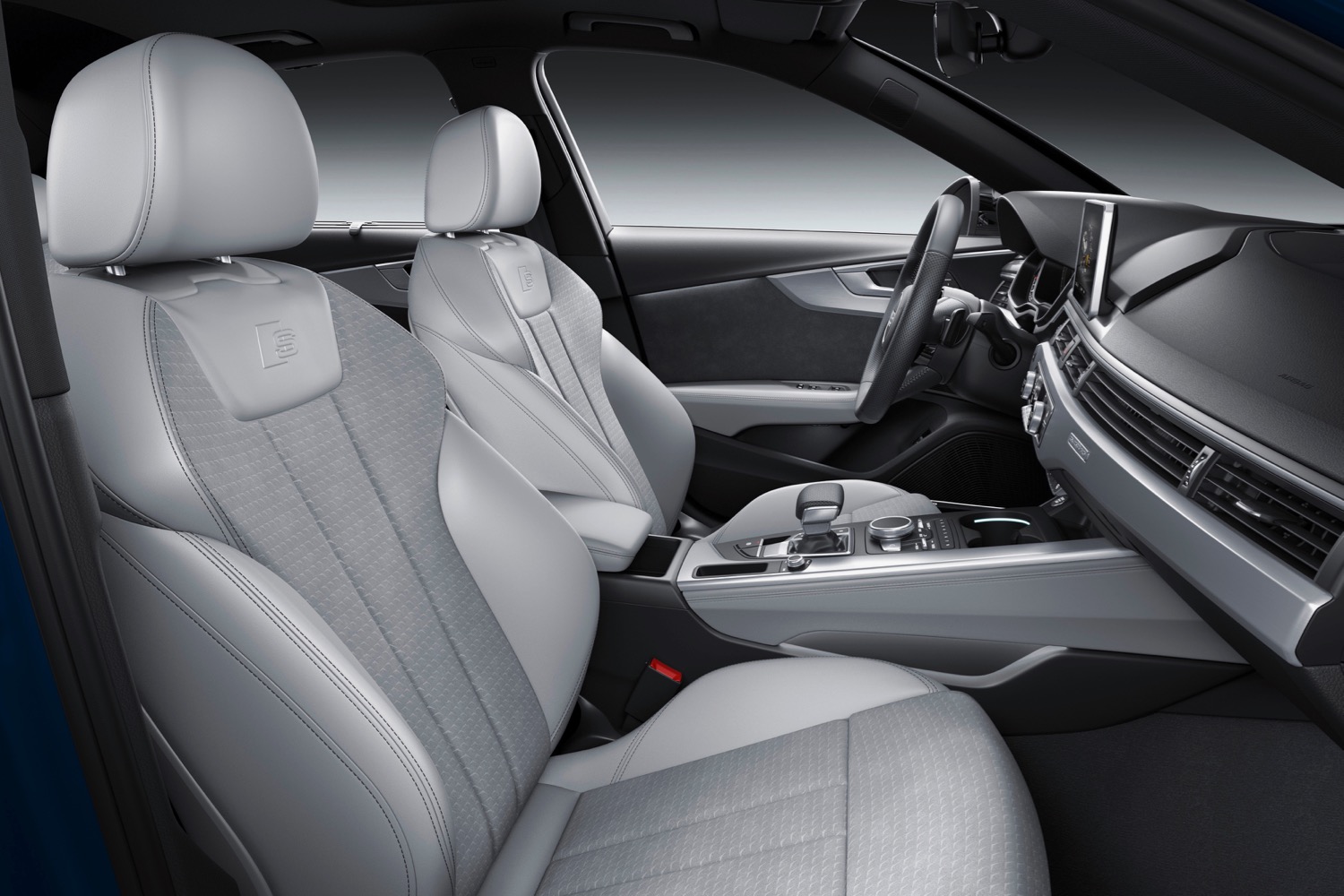The current-generation Audi A4 arrived in the United States in late 2016, but it’s been on sale elsewhere since early 2015. So while the A4 may seem fresh to U.S. customers, it’s time for this luxury car to be updated. Audi is only showing the European version for now, but expect the U.S.-spec A4 to get similar changes, likely for the 2019 model year.
Audi made some changes to the exterior, but it takes a sharp eye to spot the differences. The grille, and front and rear fascias have all been revised, and the A4 rides on 19-inch wheels with a new design. The previous round exhaust tips were exchanged for rectangular units, and Audi says the design of taillights has been changed. The optional S Line appearance package will see some changes as well.
The A4 will also get a new optional Competition package, which can be added to the S Line package. The Competition package adds sport-tuned suspension, model-specific Audi Sport 19-inch wheels, red brake calipers, LED headlights, and Turbo Blue paint. The interior gets carbon inlays, a three-spoke multifunction steering wheel, and black partial-leather sport seats. Alternatively, customers can get the seats from the S4 performance model.
As before, the U.S. will get sedan and Allroad wagon body styles. The Allroad is distinguished from the A4 Avant wagon sold elsewhere by a raised ride height and exterior cladding, meant to provide a more SUV-like look. The sportier S4 will likely return as well, although it’s unclear if we’ll see the more hardcore RS 4 model currently offered elsewhere on these shores.
No mechanical changes were mentioned for the European-spec model, and that will likely also be the case for the U.S. On this side of the Atlantic, the A4 is offered with a 2.0-liter turbocharged four-cylinder engine that makes 190 horsepower and 236 pound-feet of torque in the efficiency-focused A4 Ultra, and 252 hp and 273 lb-ft in other A4 models. Front-wheel drive and Audi’s Quattro all-wheel drive are both available, depending on the trim level.
Expect more details, including pricing and a launch date, for the U.S.-spec 2019 Audi A4 sometime over the next few months.
